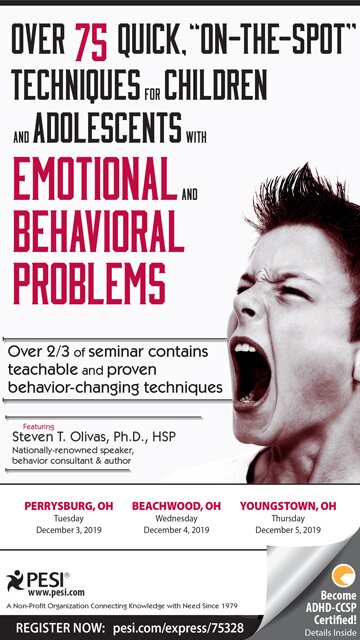- Length5 Days
- Pre-requisiteGood health and the physical ability to safely carry out rigorous activities during “live” fire fighting exercises.

Course Description

8-Hour Supervisory Training for Behavior Analysts - 12 month license Developed in partnership with Drs. Jon Bailey and Mary Burch, this course is approved for 9.5 Learning Supervision BACB CE credits and meets the BACB’s requirement for an 8-hour, competency-based training. Teach the parents a Parent Management Training approach (e.g., a reward / punishment system, contingency contract, token economy), explaining how parent and child behavioral interactions can reduce the frequency of impulsive, disruptive, and negative attention-seeking behaviors and increase desired behavior (e.g., prompting and reinforcing. The purpose of the SBM Diversity Institute for Emerging Leaders is to help early-career members from diverse backgrounds or those who are working with those from underrepresented populations develop into effective, thoughtful leaders by fostering leadership skills and a deep understanding of the principles of diversity and inclusion. The Behavioral Tech team continues to monitor the situation with COVID-19 in the delivery of our public trainings. If you are interested in a training, contact us to find out the latest details. Interested in a training that is sold out? Please join our Waiting List so we can contact you as we schedule future events. The purpose of the SBM Diversity Institute for Emerging Leaders is to help early-career members from diverse backgrounds or those who are working with those from underrepresented populations develop into effective, thoughtful leaders by fostering leadership skills and a deep understanding of the principles of diversity and inclusion.
This is required by the STCW 2010 code for all mariners with safety or pollution control duties. Basic Training (Basic Safety Training) combines all four elements of basic safety into a 5-day program. Training may be taken individually depending on attendee's needs. These courses are designed for seafarers in order to provide immediate life-saving first aid until the arrival of first–aiders of greater training. This course is created to meet the standards of competency in elementary first aid, fire fighting, personal safety and personal survival.
If you are in need of one of the individual elements, please contact our admissions team for more information.
This course satisfies the following STCW 2010 and CFR training requirements:
46 CFR 11.302(a)(3),46 CFR 12.602(a)(3), 46 CFR 11.201(i)(1), 46 CFR 11.302(a)(2), 46 CFR 12.602(a)(2), 46 CFR 11.201(h)(2) [Basic only] 46 CFR 11.201(h)(3), 46 CFR 13.201(c)(3), 46 CFR 13.301(c)(3), 46 CFR 13.401(d), 46 CFR 13.501(c)(3), 46 CFR 11.302(a)(4), 46 CFR 12.602(a)(4), 46 CFR 11.302(a)(1), 46 CFR 12.602(a)(1)
46 CFR 11.205 (l) (4) Formerly 10.205(i)(4)
- 46 CFR 11.202 (b) (1) .Formerly 10.202(b)(1)
- 46 CFR 11.202(b)(2) Formerly 10.202 (b)(2)
- 46 CFR 11.202(b)(3) Formerly 10.202 (b)(3)
- 46 CFR 11.205(d) Formerly 10.205 (d)
- 46 CFR 11.205(e)(l)(ii) Formerly 10.205 (e)(i)(ii)
- 46 CFR 11.205(e)(2)(iii) Formerly 10.205 (e)(2)(iii)
- 46 CFR 11.401(g)(1) Formerly 10.401 (g)(1)
- 46 CFR 13.201(e)
- 46 CFR 13.301(e)
- 46 CFR 13.401(e)
- 46 CFR 13.501(e)
Please note for the PST section: If the participant is unable to swim, tread water, or has a fear of water they will be dis-enrolled from the course until such time the participant can provide evidence of successfully completing swimming lessons. MITAGS will accept the equivalent of the YMCA's adult beginner (level 1). If the participant indicates at the beginning of or prior to the start of the BT-PST portion that they are unable to swim, tread water, or has a fear of water they will be refunded the price of the BT-PST portion. Note: NO refund will be provided if the participant does not indicate to the staff prior to the pool session.
Prerequisites- Ability to tread water for 1-minute without assistance

Suggested Courses/Skills- See NVIC 08-14.

What You Will Learn
- Compliance with Emergency Procedures
- Safe Working Practices, Preventing Marine Pollution
- Effective Shipboard Communications, Effective Human Relations
- Types of Emergencies
- Emergency Communications, Emergency Equipment
- Hypothermia and Human Performance
- CPR and Emergency Medical Overview
- Proper use of PFDs, Immersion Suits, Liferaft, Abandon Ship Gear
- Basic Firefighting
- Understand the relationship of the fire tetrahedron to extinguish fire
- Extinguish a flammable liquid fire using various types of fire suppression agents
- Basic Patient transport

What You Should Bring
- Comfortable clothes
- Closed toed shoes
- Clothes that are suitable to wear to a fire fighting class
- Swimsuit
- Student must be clean shaven for the SCBA portion in order to create a good seal
There are no pre-requisites for this class, but this course includes strenuous physical activity. Mariners must be physcially fit and capable of moderate swimming exertion!
Alternatives to incarceration and re-entry programs often do not receive the attention or spotlight that other social service programs do. However, alternatives to incarceration provide many benefits not only for the government, but for the participants and their community as well. These programs help New York lower costs while providing its participants with life skills to move away from further encounters with the criminal justice system.
The criminal justice system has become a heavy financial burden in the past decade. The annual cost per person to place an individual in jail is $73,000 and in a state prison is $38,000. However, the average per client cost of most alternatives to incarceration programs is $11,000 – representing an immense savings over the cost of incarceration. Each year, ATI/Reentry programs save City and State correctional systems more than $100 million. The juvenile criminal justice system is even more expensive due to a wider range of needs. New York State spends nearly $120,000 a year to incarcerate a single juvenile offender, while ATI programs can cost between $5,000–$28,000*. This clearly saves the government a vast amount of money. These statistics remind us of the contributions that non-profits make to the community, as well as the amount of money they save the government.
Alternatives to incarceration don’t just provide fiscal benefits, but they improve the overall well-being of communities. ATIs allow a judge to sentence someone to a program where they receive treatment, education, and employment training in the community, all the while remaining under strict supervision. Studies by the nation’s leading criminal justice researchers have shown that ATIs reduce jail time, and successfully treat people in the community without compromising public safety**. Alternatives to incarceration are meant to ‘stop the cycle’ that the criminal justice system has only exacerbated. They work to build a better, safer community; those who participate in these programs complete over 100,000 hours of community service over the course of one year**. Also, they help to build the local economy in neighborhoods ridden with crime. If the convicted are given the opportunity to work in their hometown, they are positively contributing to the community and not engaging in previous behavior. By receiving job training, drug treatment, and overall counseling those convicted have the chance to break the cycle.
Unfortunately, due to tough economic times in our nation, cuts have been made at the federal, State, and City levels, downsizing the entire alternatives to incarceration program. In 2010, the Governor’s budget proposed a cut of more than 10 percent, which would reduce ATI funding by $1.6 million, and neither the Assembly nor Senate budget resolutions restored any funding. The field also lost critical federal and State funding over the last two years. Even worse, we are hearing that approximately $3 million in Legislative additions – which have been the backbone of much of the ATI system for many years – are in real jeopardy. All told, ATI programs stand to lose as much as $4.5 million, a blow that could decimate the system***.
With these alarming statistics, it is important as ever to support ATI programs and continue State funding. Not only are these programs cheaper than incarceration, but they enrich the lives of each participant. In order to build better communities, we need to re-evaluate the successfulness of the justice system and work to break the cycle of repeated criminal offenses. Also, with the current state of the economy, we need to remember that ATI programs save money now and in the long term by diverting people from prison, and gives individuals the tools to stay out of prison.
Contributed by Nicole Brown of the Human Services Council.
– – – –
*http://fortunesociety.org/2012/06/03/gallery-of-city-hall-rally-for-urging-increased-funding-for-alternatives-to-incarceration-reentry-programs/
27 Urge Surfing Dialectical Behavioral Training Lesson
** http://www.wpaonline.org/pdf/WPA_ATI.pdf
*** http://lacpolicyblog.wordpress.com/2010/04/27/urge-legislature-to-use-federal-funds-to-restore-cuts-to-ati-and-re-entry/#more-633
Dialectical Behavioral Therapy
To find the final City budget over the years you can access it at: http://council.nyc.gov/html/budget/council_budget.shtml